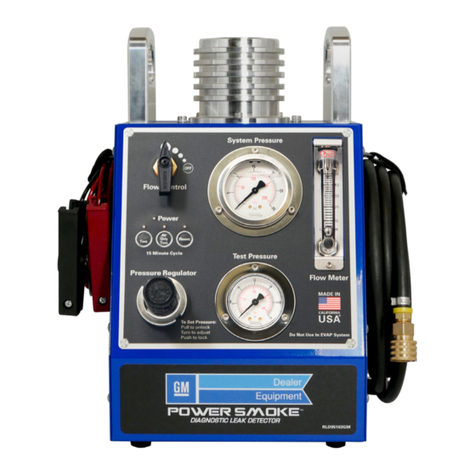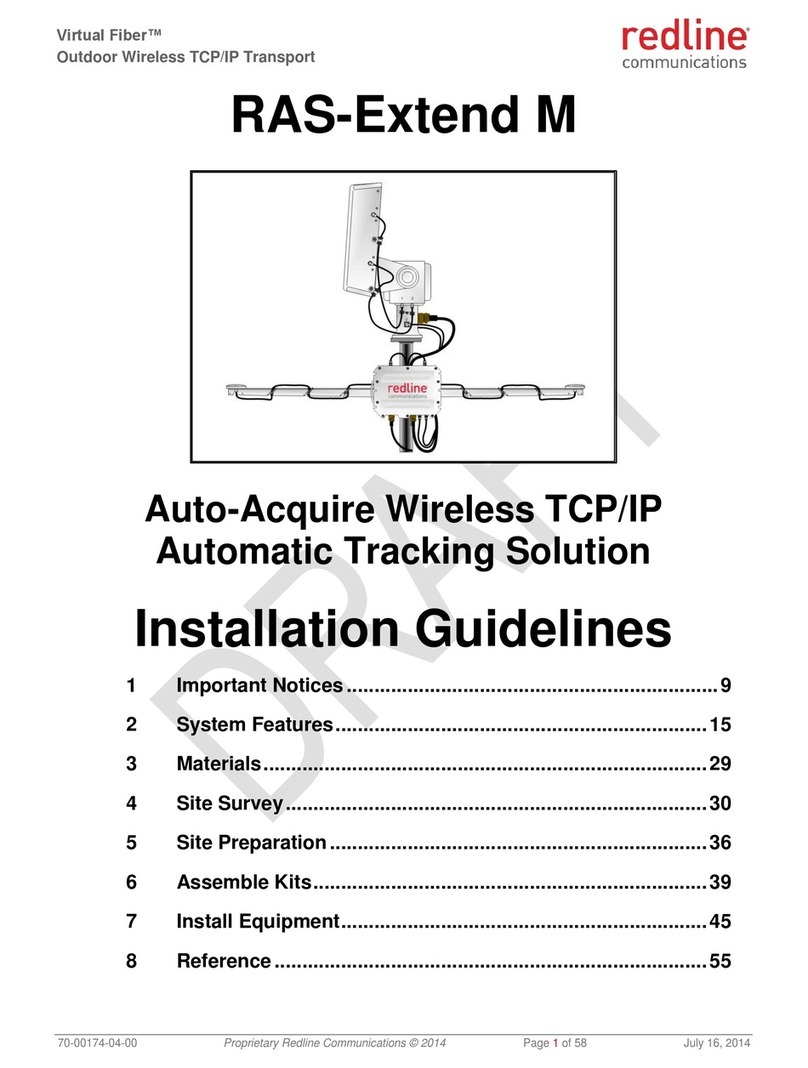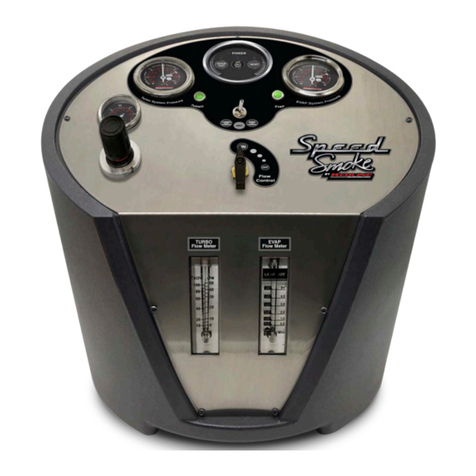
CONGRATULATIONS
Thank you for purchasing the
Air Complete™Diagnostic Leak
Detector.
Your new Air Complete™contains
its own onboard micro compressor,
eliminating the need for air lines
and gas tanks. Whether a repair
job is across the service facility or
across the lot, Air Complete™
allows you to go where the work is.
Made by the team that brought
you the world’s best-selling
diagnostic leak detectors,
Air Complete™ will not only
help you to quickly locate and
repair leaks, it will help you to
find more repair jobs. Use
Air Complete™ to quickly test
every vehicle that comes into
your shop and see how it will
help you to work smarter and
make more money.
Portability. Performance. Profit.
Air Complete™ is the complete
diagnostic solution.
Zachary Parker
President
Redline Detection, LLC
CONTENTS
Specifications.............................. 1
Reference Guide......................... 2
Safety............................................. 3
Accessories.................................. 4
Set up............................................. 6
Testing for Leaks.......................... 7
How to Diagnose Leaks:
Intake System / Vacuum Leaks... 8
EVAP - Fuel Vapor Recovery
System Leaks.............................. 9
Exhaust System Leaks................ 10
Under DashBoard Leaks............ 10
Troubleshooting............................ 11
Maintenance................................. 12
Warranty ....................................... 13































